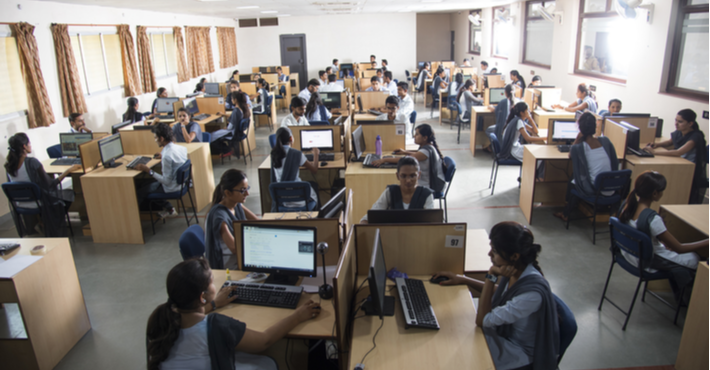Since the time India got its independence, the government of India has taken great strides in improving the quality of education in the past 40 to 50 years.

But, despite decades of reforms and government initiatives, a big chunk of the population remains uneducated. For reasons like lack of quality education, proper facilities, teacher quality, irrelevant curriculum, and pedagogy.
This is where India Inc can step in and help close the gap.
In fact, after implementation of the Section 135 of the Companies Act 2013, many organizations have indeed played their part. Corporate leaders have come to realize that the resources spent on education are bound to impact social equity. As a result, education has taken the lion’s share of their funding in their corporate social responsibility (CSR).
According to an analysis conducted by CSRBOX, over 88% companies in India invested CSR fund in one or more education projects. In fact, for the year 2019, 613 companies contributed to CSR through 8501 projects and a consolidated spending of INR 12143.77 Cr.

Although official reports for the year 2020 is yet to come out, the CSR spending will surely top 2019. For instance, Infosys alone has spent nearly Rs 360 Crore as part of its Corporate Social Responsibility programs in the years 2019-20.
While the numbers may seem big, there are still many persisting challenges and issues the country is facing.
Persisting challenges in education
Given the size of India’s population, there are simply too many hurdles for anyone to solve. That’s why the corporates need to understand India’s education landscape, so they can target their spending accordingly. While many organizations are focusing on larger issues like basic infrastructure, free education and health & nutrition, there are still other issues that need to be addressed.
1. Improving quality and adequacy of teachers
Oftentimes, even if there is sufficient infrastructure, there is a shortage of qualified teachers who are ready to take up the job. Due to this, quality education still eludes most school-children. Few organizations have taken up this responsibility, yet this is one space where more can focus their CSR activity.
Companies like Tata Teleservices has done its best in providing education to students from the underprivileged community in government schools. Ther teacher training programs have enhanced the quality of education in many government schools across the country.
2. Assessment of student achievement
Many CSR projects offer initial stage support, however, what is required is a long-term assessment of students’ achievements. A system of understanding their needs and offering them support to improve themselves is relatively low.
Tech Mahindra is one company that has an extensive portfolio of CSR in just education. Their initiative like ARISE (All Round Improvement in School Education) are long-term school improvement programmes, in partnership with local governments and partner organisations. They have also adopted more than sixty schools across India and is working with 18 partners to turn them around completely into model schools of excellence.

3. Lack of maintenance
The CSR funds are usually spent on improving the basic infrastructure and amenities. However, there is a lack of continued maintenance, and due to that any development towards infrastructure only seems like a cosmetic change at best.
4. Lack of consensus on implementation
Lack of consensus is one of the main issues that local agencies face regarding CSR projects. This often results in duplication of activities by one or more corporates, which takes on a competitive spirit rather than a collaborative approach.
These are just a few areas of interventions that require immediate attention that corporates can focus their CSR on education. However, India Inc. has not forgotten that access to quality education is fundamental to the growth of India, and they are opening many windows of possibilities, where there were none. But with the right guidance and partnerships with government and other local agencies, they being to close the gap efficiently.